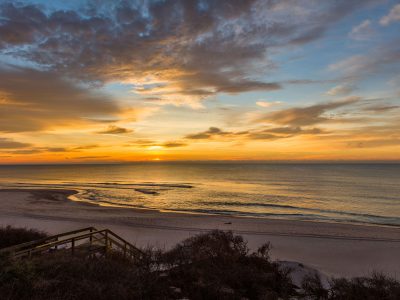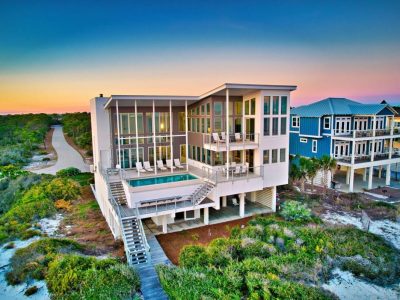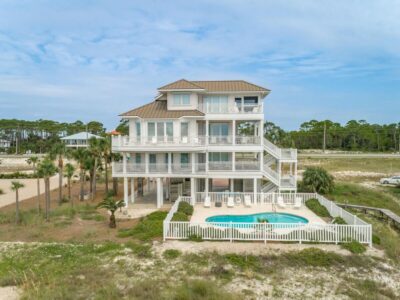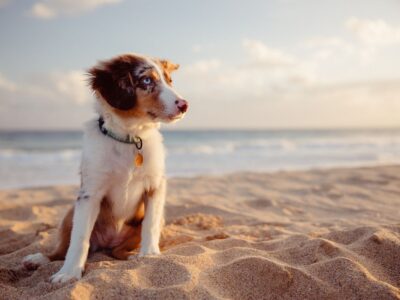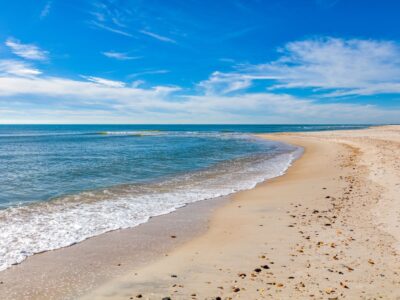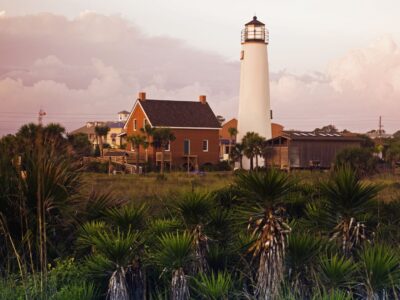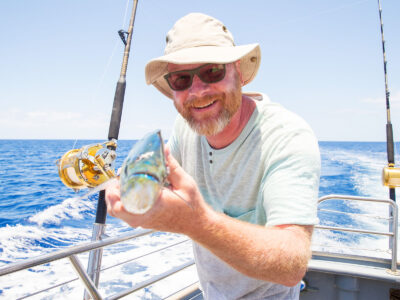Welcome to St. George Island! It’s a wonderful place. All of us at Fickling & Company Vacation Rentals want to do our best to make sure your stay at one of our St.George Island vacation rentals is everything you dream of. We know our St. George Island rentals and we know the area. We just love sharing our knowledge and experience with our guests.
St. George Island is in a wonderful location near the Florida panhandle between the Gulf of Mexico and Apalachicola Bay. It’s an ideal place for a relaxing beach vacation. It’s also the perfect place for loggerhead turtles to nest. In fact, it hosts the largest number of nesting loggerhead turtles and other sea turtles in northwest Florida.
There is so much to learn about these wonderful creatures that we share St. George Island with. We can enjoy watching them safely and let them live their reptile lives if we know what they need and how to protect them.
Loggerhead turtles are commonly found in Florida. Adult Loggerheads can weigh between 200-350 pounds and can be up to three feet long. They are called loggerheads because they have large skulls and jaws. They eat mostly crustaceans – lobster, crab, conch, etc. They can live over 80 years. The females reach maturity at age 35 and then they mate in the water every two to three years and nest on the beach. They are a globally and locally threatened species of turtle.

The Nesting Process
Loggerhead turtles like to build their nests alone at night. They will seek out narrow steeply sloped beaches with coarsely grained sand. The dunes of the beaches of St. George are the perfect place for nesting areas.
The females are very busy during the nesting season. They can make 3-5 nests each year. They will make a nest, wait about two weeks, make another nest, and repeat. Each nest can have over 100 eggs in it.
Fun fact: The temperature of the sand determines the sex of the newborn turtles. If the sand is relatively cool, the turtles will be males. Hotter sand results in female baby turtles.
When the nesting season begins, the female comes to the place where she hatched. She comes out of the ocean and looks for a good nesting area. She’ll use her flippers to rotate her body and get down to the wet sand. When she gets deep enough, about 1-3 feet, she will use her back flippers to dig out an egg chamber and lay her eggs there. Once all the eggs are laid she will cover the chamber and camouflage it by throwing sand all over the place. At this time, she returns to the ocean for a few weeks before making another nest.
After a month and a half to two months, the eggs will start hatching. The little babies have an egg tooth to break the shell of their egg. They will wait for cool temperatures (indicating that it is nighttime) to leave the nest. Then they will run to the sea, hoping to dodge any predators that might be between them and their future home. They see light and think that is the moonlit sea, so they will crawl towards that light and away from the dark land.
Season
Mating happens from late March to the beginning of June and then the nesting process happens from late April to the beginning of September. Every 14 days, the females will crawl out of the ocean and find a nesting spot to lay their eggs. In 45 to 60 days the loggerhead babies hatch, from the middle of June to the middle of October.
How to Avoid Disruption?
The biggest source of disruption for the sea turtle hatching process is artificial light. Since the babies think that light is moonlight on the ocean, they will head toward the light. If beach houses and beach towns have a lot of light in the nighttime, it often confuses the sea turtles and they head farther inland, instead of towards the ocean. They will then get eaten by predators or die from dehydration.
We recommend guests turn off the lights at St. George Island rentals at night to help prevent this confusion for the hatchlings. Also, don’t shine flashlights or take flash pictures of them if you see them.
Don’t have beach bonfires, set off fireworks, or do other activities on the beach that creates light at night. This not only confuses the hatchlings but frighten the females who want to come ashore to lay their eggs. If you see a mama turtle coming to land to make a nest, just stand back and observe her quietly from a distance. It’s a remarkable sight! But don’t do anything to disturb her.
How to Protect the Sea Turtles?
Don’t try to help the hatchlings toward the water. They need to find it themselves.
Under no circumstances should you ever disturb a turtle’s nest. Some nests are marked, but not all of them, so always be careful on the beach. It is against the law to touch or do anything to disturb nesting sea turtles, hatchlings, or their nests. Give them space, quiet, and darkness.
Don’t leave beach toys,r chairs, or anything at all on the beach when you leave. Clean up after yourself so the sea turtles have pristine sand to nest in and run to the sea. They don’t want to have to crawl over garbage.
The National Ocean Service estimates that only one in 1,000 to one in 10,000 loggerhead sea turtles survive to maturity. They need our protection. You can visit the Apalachicola National Estuarine Research Reserve Nature Center during your visit to learn more about sea turtles on St. George Island. Admission is free to the Nature Center. You can see research laboratories, giant walk-around tanks that represent all the different ecosystems and habitats in the area, and maybe even attend a “Turtle talk” to get updates on sea turtle nests in the Apalachicola region.
Who Are The SGI Turtlers?
The SGI Turtlers are a volunteer force that monitors the 12 miles of beaches on St. George Island. They locate and mark turtle nests, observe nesting activity, and make note of predators. They will observe the hatchings and determine the success of each hatching. They are really happy to talk with anyone about Florida sea turtles, so if you see an SGI Turtler going about their work, don’t be afraid to have a chat with them.
Where to Stay?
Fickling & Company Vacation Rentals has all types of rentals on St. George Island. They are all top-notch properties, and you don’t have to share a property with anyone. Your condo or cottage is just for you and your traveling companions. There are full kitchens, lots of airy space, and tons of amenities at all of our St. George Island rentals.



